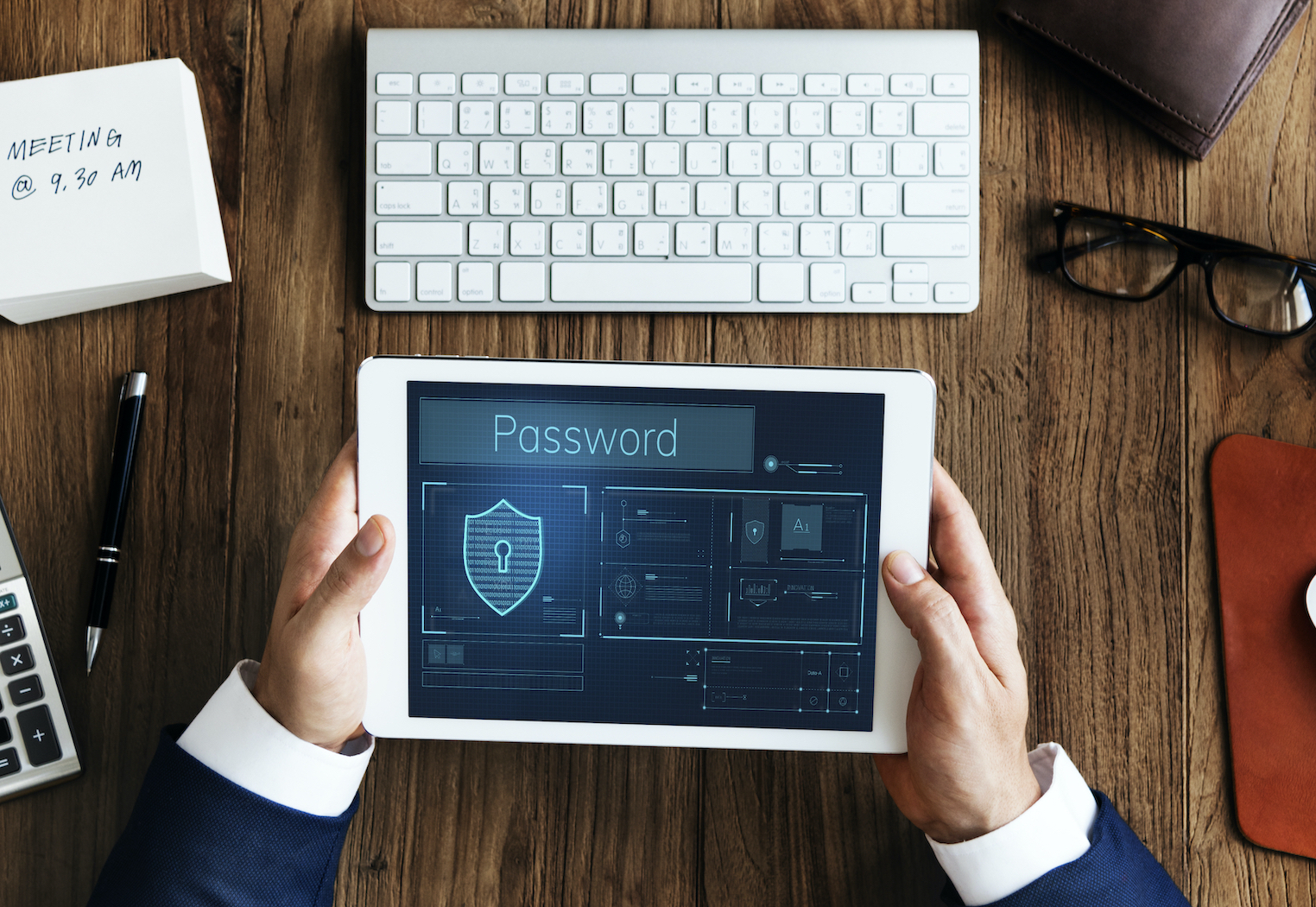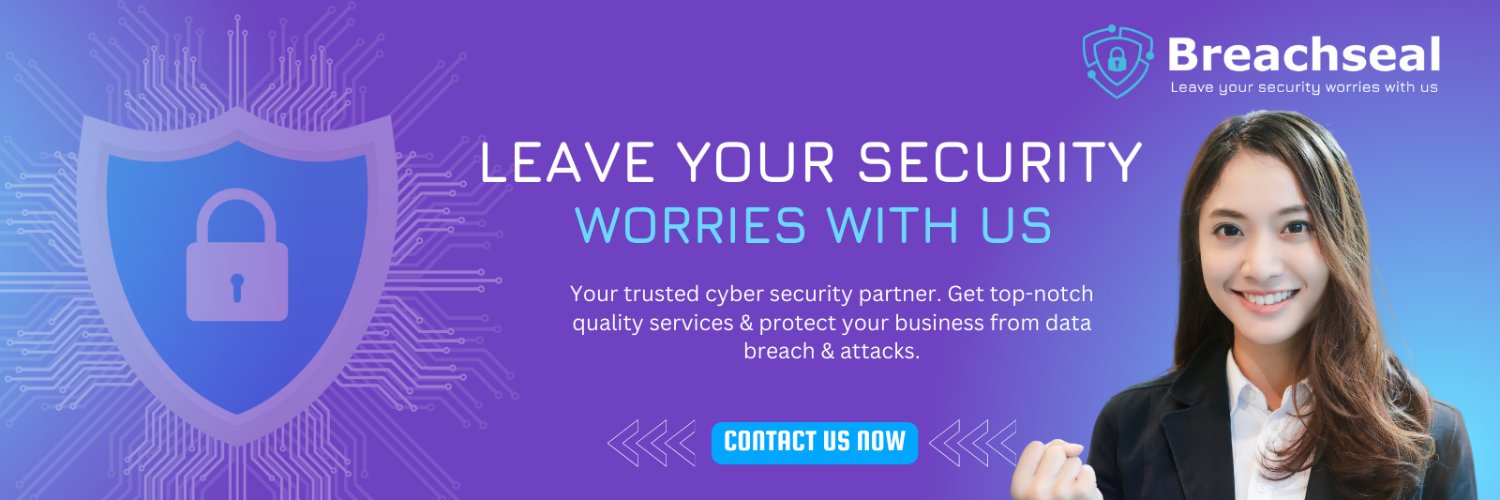













.jpg)



Breachseal Technologies Launches External Attack Surface Management (EASM) to Secure External Assets
Introducing Breachscan 1.0: Your Ultimate External Attack Surface Management Solution
In today's hyper-connected world, characterized by digital transformation and hybrid work models and complex software supply chains have all led to an unprecedented expansion of unknown and unmanaged assets, systems and exposures across the external attack surface. According to a recent study conducted by Enterprise Strategy Group (ESG), nearly 70% of organizations have experienced a cyberattack due to the exploitation of an unknown, unmanaged, or poorly managed internet-facing external asset. Organizations face a constant battle to secure their digital assets. The challenge lies in identifying and protecting all internet-facing assets, especially when attackers are constantly evolving their tactics. Traditional security solutions often require cumbersome agent installations, significantly delaying critical asset and vulnerability discovery.
Breachscan 1.0 is here to change your security game.
Key Features of Breachscan 1.0:
1. CISO Dashboard: The CISO dashboard provides a dynamic Risk Score that encapsulates the current security posture. Trend graphs offer visual representation of recent issues, assets discovered and their geographical locations, empowering CISOs to track developments over time and make informed decisions to safeguard their organization's digital assets.
2. Consolidated Risk Score: Instantly gauge your organization's risk posture with a comprehensive score that consolidates multi-dimensional risks across your public facing attack surface.
3. No Agents Needed: Say goodbye to lengthy setup processes! Breachscan allows you to kickstart asset discovery within 30 minutes, without any pesky agents slowing you down.
4. Consolidated View of Internet Facing Assets: Imagine seeing your assets through the eyes of attackers. Breachscan provides a 360-degree view of all your internet-facing resources as a single pane of glass, helping you stay one step ahead.
5. Automated Vulnerability Detection & Prioritization: Breachscan doesn't just find vulnerabilities; it prioritizes them based on their impact. Focus on what truly matters for your organization's security.
6. Private GitHub Repo Leak Detection: Worried about sensitive code exposure? Breachscan sniffs out any accidental GitHub repo leaks, ensuring your secrets remain secret.
7. Darkweb Leak Detection: Usernames, Passwords, IP addresses, Emails, and Phone numbers, Breachscan scans the dark corners of the Dark Web to protect your organization from data leaks.
8. Domain Typosquatting Attack Hunting: Don't fall victim to sneaky domain impersonators. Breachscan identifies and flags typosquatting domains, safeguarding your brand reputation and threats related to Phishing attacks.
Benefits of Breachscan 1.0:
• Financial Prudence: Breachscan’s subscription model and agentless deployment minimize capital expenditure, allowing SMEs to allocate their financial resources more effectively while still ensuring robust cybersecurity defenses.
• Operational Simplicity: The platform’s rapid deployment and intuitive interface enable SMEs to quickly establish a strong cybersecurity posture without the need for specialized IT staff, reducing operational complexity and resource allocation.
• Holistic Security Coverage: By providing a unified view of all internet-facing assets and automating the detection and prioritization of vulnerabilities, Breachscan provides continuous and comprehensive monitoring and protection.
• Risk Mitigation: Breachscan’s proactive capabilities in detecting leaks on the dark web and preventing domain typosquatting significantly lower the risk of data breaches and reputational damage, crucial for maintaining business continuity and customer trust.
• Compliance Assurance: For SMEs facing regulatory pressures, Breachscan facilitates adherence to compliance requirements with its proactive monitoring and security management features, thus avoiding potential legal and financial penalties.
Is Breachscan solution suitable for your organization?
Breachscan 1.0 caters to organizations of all sizes, from startups to enterprises. Whether you're in finance, healthcare, telecom, e-commerce, or any other industry, Breachscan ensures your digital assets remain resilient. Learn more about Breachscan 1.0: Product Page.
Ready to solidify your defenses? Get in touch with us at contact@breachseal.com
About Breachseal Technologies:
Breachseal Technologies is a leading Cybersecurity company based out of Bengaluru, India. Our offering includes Security Operations Center (SOC), Vulnerability Assessment and Penetration Testing, Security Compliance and Training.
Breachseal Technologies LLP,
40, Skylark Arcadia,
Sadarmangala, Kadugodi (PO),
Kodigehalli Main Road,
Bengaluru - 560067
India

Vulnerability Assessment plan for a small bank
Vulnerability Assessment and Penetration Testing (VAPT) is a crucial security practice for the banking sector to identify and address vulnerabilities and weaknesses in their systems and applications. Here are the steps to perform VAPT for the banking sector:
Scope:- Network infrastructure, including routers, switches, and firewalls
- Servers and workstations
- Web applications
- Mobile applications
- Databases
- Third-party vendors and service providers
- Planning and Preparation: 1 week
- Vulnerability Scanning: 2-3 weeks
- Analysis and Validation: 1-2 weeks
- Reporting and Mitigation: 1-2 weeks
- Review and Update: Ongoing
- Nessus Professional for vulnerability scanning of network infrastructure, servers and workstations
- Burp Suite for web application testing
- OWASP ZAP for web application scanning and testing
- SQLMap for database vulnerability scanning
- Mobile Security Framework (MobSF) for mobile application scanning
- Kali Linux for penetration testing and advanced vulnerability analysis
- The vulnerability assessment plan would follow a process similar to the one outlined below:
- Define the scope and objectives of the assessment
- Assemble an assessment team with expertise in information security, network and systems administration, and risk management
- Identify assessment tools and resources required for the assessment
- Develop an assessment plan with timelines, methodology, and evaluation criteria
- Use Nessus Professional to scan the network infrastructure, servers, and workstations for vulnerabilities
- Use Burp Suite and OWASP ZAP to scan the web applications for vulnerabilities
- Use SQLMap to scan the databases for vulnerabilities
- Use MobSF to scan the mobile applications for vulnerabilities
- Use Kali Linux for penetration testing and advanced vulnerability analysis
- Analyze scan results and identify vulnerabilities that pose high risk to the bank's information systems
- Conduct further analysis, including manual validation, to confirm the presence and severity of identified vulnerabilities
- Evaluate the potential risk and impact of identified vulnerabilities on the bank's information systems
- Prepare a comprehensive report that summarizes the findings of the vulnerability assessment
- Provide recommendations for mitigating the identified vulnerabilities and improving the bank's overall security posture
- Work with relevant teams to prioritize and implement appropriate mitigation measures to address the identified vulnerabilities
- Regularly review and update the vulnerability assessment process to ensure it remains effective in identifying and mitigating vulnerabilities
- Stay up-to-date with new vulnerabilities and emerging threats to continuously improve the bank's security posture
Please note that the timelines provided are estimates and may vary based on the size and complexity of the bank's information systems, the availability of resources, and other factors. Additionally, the suggested tools are just a few of the many options available in the market, and the selection of tools should be based on the bank's specific needs, budget, and environment.
To enquire about our VAPT services, please contact Breachseal Technologies

Actions performed in a Security Operations Center (SOC) for small business
A SOC (Security Operations Center) is responsible for monitoring and responding to security events and incidents in an organization's information systems. While the specific actions performed in a SOC can vary depending on the size and complexity of the business, some common actions that are typically performed in a SOC for small businesses include:
- Monitoring: The SOC monitors the organization's network, systems, and applications for potential security incidents, such as unauthorized access attempts, malware infections, or unusual network traffic.
- Alerting: If the SOC detects a potential security incident, it generates an alert to notify the appropriate personnel within the organization, such as the IT department or the incident response team.
- Investigation: Once an alert is generated, the SOC investigates the incident to determine its scope, severity, and potential impact on the organization's systems and data.
- Containment: If the incident is confirmed as a security threat, the SOC takes steps to contain the threat and prevent it from spreading further throughout the organization's network.
- Remediation: After the threat has been contained, the SOC works to remediate the issue by identifying the root cause of the incident and implementing measures to prevent similar incidents from occurring in the future.
- Reporting: The SOC prepares reports on security incidents and provides recommendations to management on how to improve the organization's security posture.
Summary:
Overall, the SOC plays a critical role in helping small businesses to detect and respond to security threats in a timely and effective manner, thereby reducing the risk of data breaches, financial loss, and reputational damage. Breachseal’s team has expertise setting up managed services operations center and have experts in threat intelligence analysis, forensic analysis and experienced SOC engineers
To enquire about our SOC services, please contact Breachseal Technologies

How can small business afford cybersecurity operations center ?
Implementing a full-fledged cybersecurity operations center (SOC) can be expensive, and it may seem out of reach for many small businesses with limited budgets. However, there are a few ways in which small businesses can afford cybersecurity operations center:
- Outsource to a Managed Security Services Provider (MSSP): MSSPs can provide cybersecurity services at a fraction of the cost of building an in-house SOC. MSSPs can monitor networks, detect and respond to security incidents, and provide ongoing security management.
- Use cloud-based security solutions: Many cloud-based security solutions offer comprehensive security services, including monitoring, threat detection, and response. These services can be more affordable and scalable than building a SOC from scratch.
- Invest in security automation tools: Security automation tools can help streamline security processes, reduce response times, and minimize the workload of security teams. These tools can be more cost-effective than hiring additional staff or building an in-house SOC.
- Prioritize risk management: Small businesses can prioritize risk management by conducting regular risk assessments, implementing security policies and procedures, and training employees on security best practices. By reducing the likelihood of a security breach, small businesses can minimize the need for a SOC.
- Start small and scale up: Small businesses can start by implementing basic security measures, such as firewalls, antivirus software, and intrusion detection systems. As the business grows, they can gradually invest in more advanced security measures and build out their SOC capabilities.
Conclusion
Breachseal’s team has expertise setting up managed services operations center for small and medium businesses with access to secure workspace and resources who are experts in threat intelligence analysis, forensic analysis and experienced SOC engineers
To enquire about our SOC services, please contact Breachseal Technologies

Cyber protection isn't just for big corporations. Startups need it too.
- Protection of sensitive information: Startups often deal with sensitive information such as customer data, financial information, and intellectual property. A cybersecurity breach can result in the theft or loss of this information, which can be disastrous for a startup's reputation and bottom line.
- Compliance with regulations: Startups may be subject to regulations such as the General Data Protection Regulation (GDPR) or the California Consumer Privacy Act (CCPA). Compliance with these regulations requires a robust cybersecurity strategy to protect personal data.
- Financial impact: A cybersecurity breach can result in financial losses due to the costs associated with investigating and addressing the breach, as well as potential legal fees and fines.
- Reputation damage: A cybersecurity breach can damage a startup's reputation, making it difficult to attract and retain customers, investors, and employees.
- Competitive advantage: A strong cybersecurity strategy can give startups a competitive advantage by demonstrating a commitment to protecting sensitive information and maintaining customer trust.
In summary, cybersecurity is critical for startups because it protects sensitive information, ensures compliance with regulations, minimizes financial losses, protects reputation, and can give a competitive advantage.
To enquire about our cybersecurity services, please contact Breachseal Technologies

Don't let cybercriminals take your small business down. Stay protected with cybersecurity measures
Securing SMBs is critical because small and medium-sized businesses are increasingly targeted by cybercriminals due to their potentially weaker security measures compared to larger organizations. Cyberattacks can lead to data breaches, financial loss, and reputational damage, which can be devastating for SMBs that often lack the resources to recover. By implementing effective cybersecurity measures and educating employees on best practices, SMBs can reduce their risk of being targeted and protect their operations and data.
- Conduct regular security risk assessments to identify vulnerabilities and prioritize security measures.
- Implement access controls, including strong password policies and multi-factor authentication, to restrict access to sensitive data and systems.
- Keep software up to date with the latest security patches and updates to reduce the risk of known vulnerabilities being exploited.
- Regularly backup important data to prevent data loss and have a disaster recovery plan in place to restore data in case of an incident.
- Educate employees on cybersecurity best practices, including how to identify and report suspicious activity.
- Use firewalls, antivirus software, and other security tools to protect against malware and other cyber threats.
- Implement intrusion detection and prevention systems to monitor network traffic for signs of unauthorized access or suspicious activity.
- Develop an incident response plan that outlines the steps to take in case of a security breach, including who to contact and what actions to take to contain and remediate the incident. Implement physical security measures to protect against physical theft or damage to equipment.
- Regularly review and update security policies and procedures to ensure they remain effective and relevant.
To enquire about our cybersecurity services, please contact Breachseal Technologies

Optimizing Your Domain Monitoring Approach
Dark web monitoring is performed using specialized software and tools designed to search for specific keywords, phrases, and personal information on the dark web. Here are the general steps involved in the dark web monitoring process:
Define search criteria: The first step is to define the search criteria. This includes identifying the specific keywords, phrases, and personal information that need to be monitored. For example, an organization might want to monitor the dark web for any mention of their company name, employee names, or customer data.
Use specialized software: Dark web monitoring is typically performed using specialized software and tools designed for this purpose. These tools use advanced algorithms to scan the dark web and identify any instances where the search criteria is mentioned.
Monitor dark web marketplaces: Many of the illegal activities that occur on the dark web, such as the sale of stolen data, occur on underground marketplaces. Dark web monitoring tools can be used to scan these marketplaces for any instances of the search criteria being sold or traded.
Analyze results: Once the monitoring process is complete, the results need to be analyzed to identify any potential threats or security risks. This may involve manually reviewing the search results to determine the context in which the search criteria was mentioned.
Take action: If any potential threats or security risks are identified, appropriate action should be taken to mitigate the risk. This may involve notifying affected individuals, changing passwords or login credentials, or implementing additional security measures.
Overall, dark web monitoring is a complex process that requires specialized tools and expertise to be effective. It is typically performed by cybersecurity professionals, we at Breachseal do offer this service.
To enquire about our Domain Monitoring services, please contact Breachseal Technologies

A peek into what is dark web monitoring and why is it important
What is Dark web monitoring
Dark web monitoring is the practice of monitoring the dark web for any mention of specific keywords, phrases, or personal information that could indicate a potential threat to an individual or organization's security. The dark web is a part of the internet that is not indexed by search engines and is often used for illegal activities such as drug sales, hacking, and selling stolen data.
Why is it needed
Dark web monitoring is needed because it helps individuals and organizations identify potential security threats and take proactive measures to prevent them. By monitoring the dark web, individuals and organizations can discover if their sensitive information such as social security numbers, credit card numbers, or login credentials have been compromised and are being sold or traded. This can help them take steps to protect their accounts and prevent identity theft or other fraud.
Additionally, dark web monitoring can help organizations identify potential security threats such as cyber-attacks, malware, and phishing scams. By being aware of these threats, organizations can take proactive measures to prevent them from occurring and ensure that their networks and systems are secure.
Conclusion
This is not discussed as commonly as the other cybersecurity vulnerabilities due to the secretive nature of how this activity is performed. This is not just an issue for large brands in the market place today, as high performing startups are a key target by their competitors to break into their market share or defame them by breaching their data. Overall, dark web monitoring is an important tool in maintaining online security and protecting sensitive information.
To enquire about our dark web monitoring services, please contact Breachseal Technologies

Why Cybersecurity is critical for small and medium business
Small and medium-sized businesses (SMBs) are at risk of cyber threats just as much as larger corporations. In fact, the 2020 Cost of a Data Breach Report by IBM found that the average cost of a data breach for SMBs was $2.45 million, a significant amount for any business. With the increasing amount of data that businesses collect and store, it is critical for SMBs to prioritize cybersecurity measures to protect their business from potential cyber attacks.
Small and medium-sized businesses (SMBs) often overlook the importance of cybersecurity. They assume that they are too small to be targeted by hackers or that investing in cybersecurity measures will be too costly. However, SMBs are just as vulnerable to cyber attacks as large corporations, and a single security breach can have devastating consequences. In this blog, we will discuss the importance of cybersecurity for SMBs and the steps they can take to protect themselves.
Here are some key cybersecurity practices that small and medium-sized businesses can implement to protect themselves:
- Conduct regular employee training on cybersecurity best practices: Employees can be a significant vulnerability in a company's cybersecurity defenses. Ensuring that employees are trained to recognize and avoid phishing attempts, maintain strong passwords, and report any suspicious activity can go a long way in protecting the company's sensitive data.
- Implement two-factor authentication (2FA) 2FA adds an extra layer of security beyond passwords, requiring users to provide additional proof of identity before accessing sensitive data. This can be a crucial defense against cyber attacks, as stolen or weak passwords are often the entry point for hackers.
- Regularly update software and systems Keeping software and systems up-to-date with the latest security patches can help prevent cyber attacks that exploit known vulnerabilities. This includes not only operating systems and applications, but also any hardware such as routers and firewalls.
- Use antivirus and anti-malware software Antivirus and anti-malware software can detect and prevent many types of cyber attacks, including viruses, spyware, and ransomware. Regularly updating these programs is important to ensure they are effective against the latest threats.
- Backup data regularly Backing up data is essential in case of a cyber attack or other disaster that could cause data loss. It is important to store backups securely, such as off-site or in the cloud, and to test the backups regularly to ensure they are functioning properly.
- Limit access to sensitive data Limiting access to sensitive data to only those employees who need it can help prevent unauthorized access. Additionally, implementing access controls such as role-based access and password policies can further strengthen security.
- Have an incident response plan An incident response plan outlines the steps to take in case of a cyber attack or other security incident. It is important to have a plan in place ahead of time to minimize damage and ensure a swift and effective response.
In conclusion, SMBs should prioritize cybersecurity to protect themselves from the potentially devastating effects of cyber attacks. By implementing these best practices and staying up-to-date on the latest threats, SMBs can help ensure the security of their data and the long-term success of their business.
To enquire about our cybersecurity services, please contact Breachseal Technologies
.jpg)
Regulatory Compliance – What is it and why do you care?
In today's increasingly digital world, cyber threats have become a major concern for businesses and individuals alike. Cybersecurity compliance is one way to help mitigate these threats and protect sensitive information from falling into the wrong hands. p In today's increasingly digital world, cyber threats have become a major concern for businesses and individuals alike. Cybersecurity compliance is one way to help mitigate these threats and protect sensitive information from falling into the wrong hands.
What is Cybersecurity Compliance?
Cybersecurity compliance refers to a set of regulations and standards that organizations must adhere to in order to protect themselves against cyber threats. Compliance frameworks, such as the Payment Card Industry Data Security Standard (PCI DSS) and the General Data Protection Regulation (GDPR), outline specific requirements for data protection and risk management. These standards help organizations create a framework for identifying and mitigating risks, protecting sensitive information, and responding to security incidents.
Why is Cybersecurity Compliance Important?
Cybersecurity compliance is critical for protecting the sensitive data of both organizations and individuals. Failure to comply with these standards can result in data breaches, which can have significant financial and reputational consequences. In addition, organizations that fail to comply with cybersecurity regulations may be subject to fines and legal action.
Compliance frameworks also help organizations stay current with the latest security best practices and identify potential vulnerabilities in their systems. This proactive approach can help prevent cyber-attacks before they occur and minimize the impact of any breaches that do occur.
The Risks of Non-Compliance
Non-compliance with cybersecurity regulations and best practices can result in severe consequences for organizations. For example, the European Union's General Data Protection Regulation (GDPR) allows fines of up to €20 million or 4% of global annual revenue for non-compliance. In the United States, the Health Insurance Portability and Accountability Act (HIPAA) allows fines of up to $1.5 million per year for non-compliance. Failure to comply with cybersecurity regulations and best practices can also result in legal action, reputational damage, and loss of customer trust.
How to Achieve Cybersecurity Compliance?
Achieving cybersecurity compliance requires a comprehensive approach that includes people, processes, and technology. Some key steps organizations can take to achieve compliance include:
- Identify the relevant compliance frameworks and regulations that apply to your organization.
- Conduct a risk assessment to identify potential vulnerabilities in your systems and processes.
- Develop a cybersecurity policy that outlines the steps your organization will take to protect sensitive information.
- Implement security controls and procedures that align with your compliance requirements.
- Train employees on security best practices and the importance of compliance.
- Regularly monitor and review your security posture to identify and address potential vulnerabilities.
- Conduct regular security audits and assessments to ensure ongoing compliance.
Conclusion
Cybersecurity compliance is a critical aspect of protecting sensitive information and mitigating cyber threats. By adhering to compliance frameworks and implementing security controls and procedures, organizations can create a comprehensive security strategy that reduces the risk of data breaches and minimizes the impact of any security incidents. While achieving compliance requires ongoing effort and investment, the benefits of a secure and compliant environment far outweigh the costs.
To enquire about our regulatory compliance and certification services, please contact Breachseal Technologies

Vulnerability Assessment – What is it about and why it is important for any business?
What is Vulnerability Assessment?
Vulnerability assessment is a systematic process of identifying and analyzing security vulnerabilities in an organization's IT infrastructure. This process involves scanning the systems, networks, and applications to identify vulnerabilities and then ranking them based on their severity. The primary goal of vulnerability assessment is to identify potential weaknesses that attackers can exploit to gain unauthorized access to an organization's network or steal sensitive data.
Importance of Vulnerability Assessment
Vulnerability assessment is essential for several reasons. Here are some of the reasons why organizations should conduct vulnerability assessments regularly:
- 1. Identify Weaknesses: Vulnerability assessment helps organizations identify potential weaknesses in their IT infrastructure. This information can be used to strengthen the security of the organization's network, systems, and applications.
- 2. Compliance: Many industries have regulatory requirements that mandate organizations to conduct regular vulnerability assessments. Compliance with these regulations is critical to avoid legal consequences and financial penalties.
- 3. Prevent Data Breaches: Vulnerability assessment helps organizations prevent data breaches by identifying potential security gaps before they can be exploited by attackers.
- 4. Improve Security Posture: Conducting regular vulnerability assessments can help organizations improve their security posture by addressing identified vulnerabilities and strengthening their defenses.
Benefits of Vulnerability Assessment
Vulnerability assessment offers several benefits to organizations, including:
- 1. Enhanced Security: Vulnerability assessment helps organizations identify security gaps and implement security measures to address them, thereby enhancing the overall security of the organization.
- 2. Cost Savings: Conducting regular vulnerability assessments can help organizations save costs associated with cyber-attacks, such as data loss, reputational damage, and legal consequences.
- 3. Compliance: Regular vulnerability assessments can help organizations comply with regulatory requirements and avoid legal consequences and financial penalties.
- 4. Risk Mitigation: Vulnerability assessment helps organizations mitigate the risk of cyber-attacks by identifying and addressing potential security gaps.
Conclusion
Vulnerability assessment is a critical step in identifying potential security vulnerabilities in an organization's IT infrastructure. Conducting regular vulnerability assessments can help organizations improve their security posture, comply with regulatory requirements, and prevent data breaches. By identifying and addressing potential security gaps, organizations can enhance their overall security and mitigate the risk of cyber-attacks.
To enquire about our vulnerability assesment services, please contact Breachseal Technologies

Breachseal Blogs - Introduction
That's why it's more important than ever to take cybersecurity seriously. Whether you're an individual, a small business, or a large corporation, there are steps you can take to protect yourself from cyber-attacks.
In this blog, we'll cover a range of topics related to cybersecurity, including:- Basic cybersecurity tips for individuals: We'll provide simple, actionable steps you can take to protect your personal information and devices from cyber threats.
- Cybersecurity for small businesses: Small businesses are often targeted by cybercriminals, but many lack the resources to implement robust cybersecurity measures. We'll offer tips and best practices for small business owners to help them protect their data and assets.
- Cybersecurity for large organizations: Large corporations face a different set of cybersecurity challenges, including managing large amounts of data and protecting against targeted attacks. We'll explore best practices for cybersecurity at scale.
- The latest cybersecurity threats and trends: Cyber threats are constantly evolving, and it's important to stay up-to-date on the latest tactics and trends. We'll provide regular updates on emerging threats and offer insights into how to stay safe.
- Expert interviews and Q&As: We'll interview cybersecurity experts from around the world to get their insights on the latest trends and best practices.
At our cybersecurity blog, we're committed to providing valuable information to help our readers stay safe and secure online. Whether you're an individual, a small business owner, or a cybersecurity professional, we hope you'll find our content informative and useful.
Thank you for visiting our cybersecurity blog, and we look forward to sharing our insights with you.To enquire about our cybersecurity services, please contact Breachseal Technologies